The Vault is Slate’s history blog. Like us on Facebook, follow us on Twitter @slatevault, and find us on Tumblr. Find out more about what this space is all about here.
The images below, all printed in 1930, reflect the government’s promotion of early-childhood health and well-being in the early years of the Soviet Union. The London School of Economics Library has collected a group of these posters—half brightly-colored, half sepia-toned—in a Flickr set.
In her book about childhood in Russia during the early Soviet period, historian Lisa Kirschenbaum writes that children and childhood were ideologically important to those involved in the Bolshevik Revolution. Children had the potential to grow into ideal communists, and communal early childhood education was seen as a good way of getting all members of the rising generation to hold consistent views. (In the United States, the conservative opposition to attempts to institute government support for day care in the early 1970s often referred, obliquely or explicitly, to the communalism of Soviet child care.)
By 1930, when these images were produced, the government-supported day care (or “crèche”) was doubly politically important, since young mothers were encouraged to work. In these posters, babies that look to be about 6 months old cry “I’m bored at home!” and beg to be taken to the crèche.
As Kirschenbaum writes, governmental officials considered peasant parents to be uneducated and given to antiquated habits. Fliers like the ones below that show how to hold a three-month-old infant, how to cut your child’s nails without biting them, or how to guard against flies were meant to counteract this perceived lack of savvy.
Other such instructional posters in the set offer advice on such matters as the “preparation of juice from raw fruits”; the weighing of children; and the bathing of eyes and cleaning of noses.
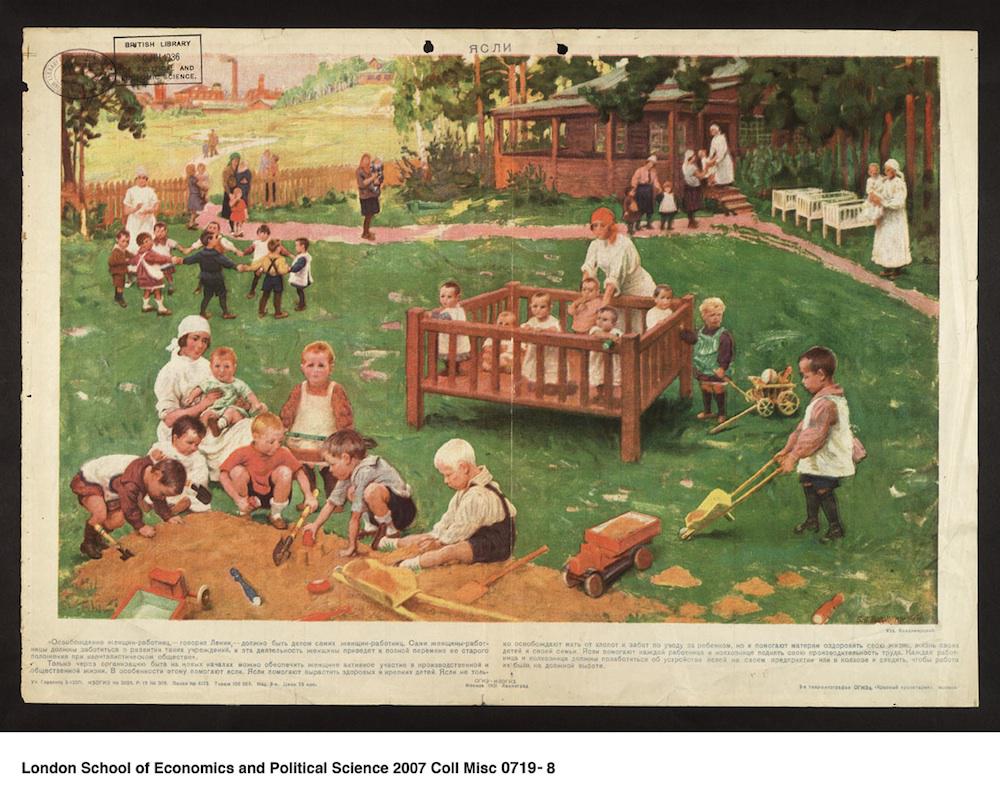
London School of Economics Library.
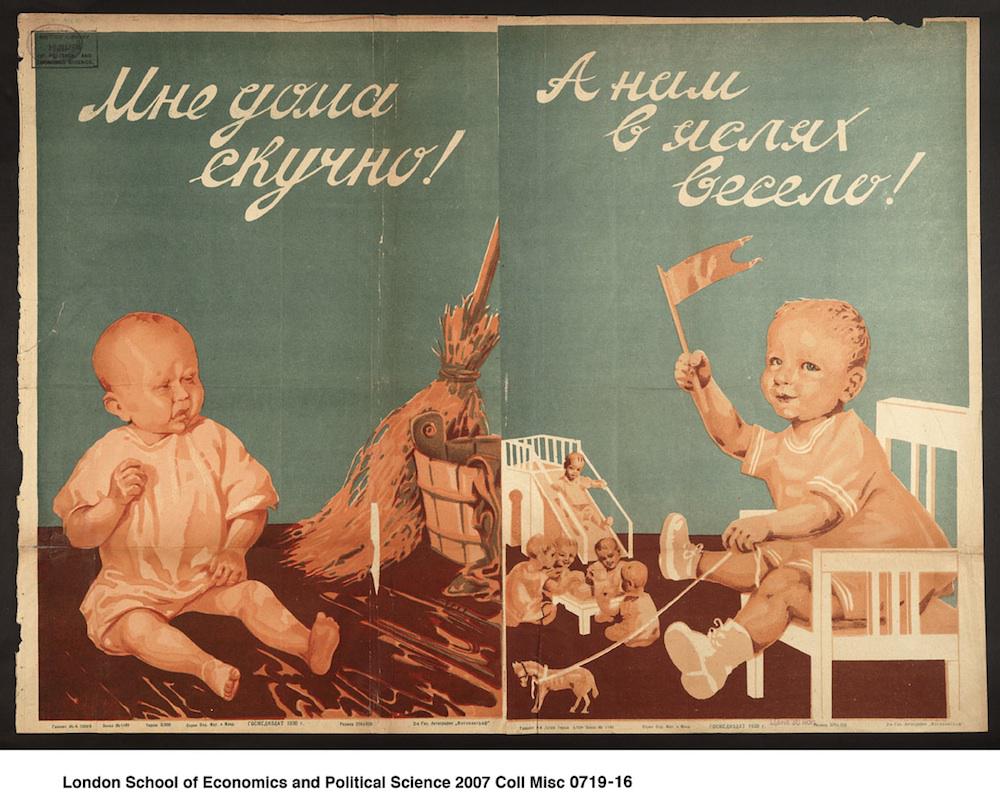
London School of Economics Library.

London School of Economics Library.
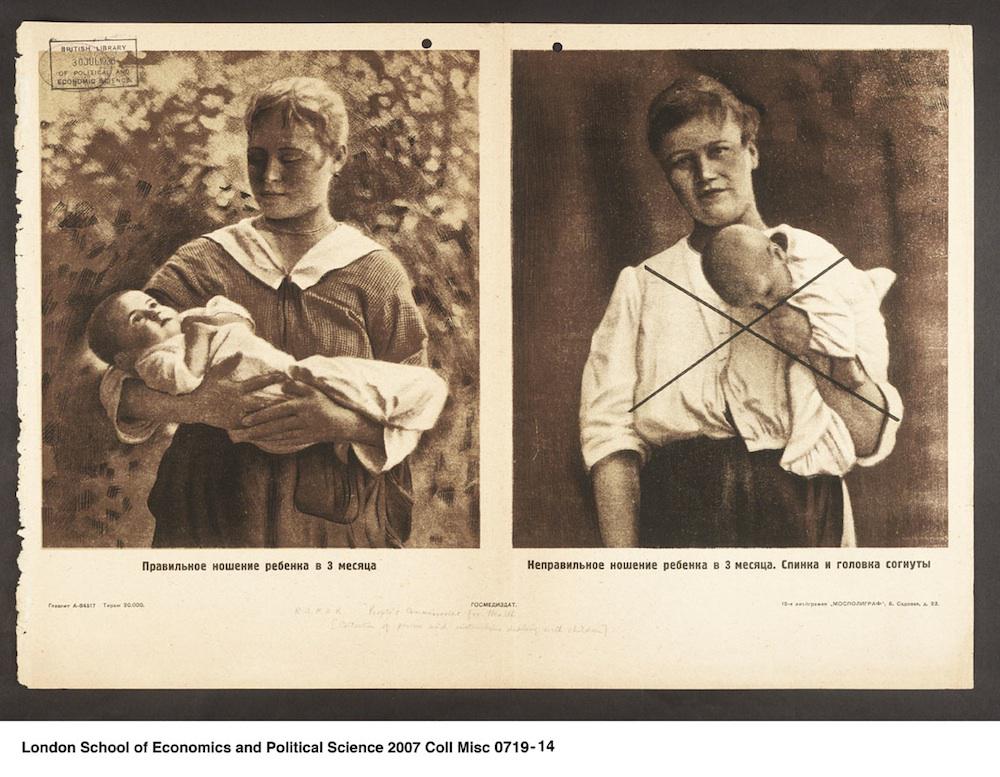
London School of Economics Library.
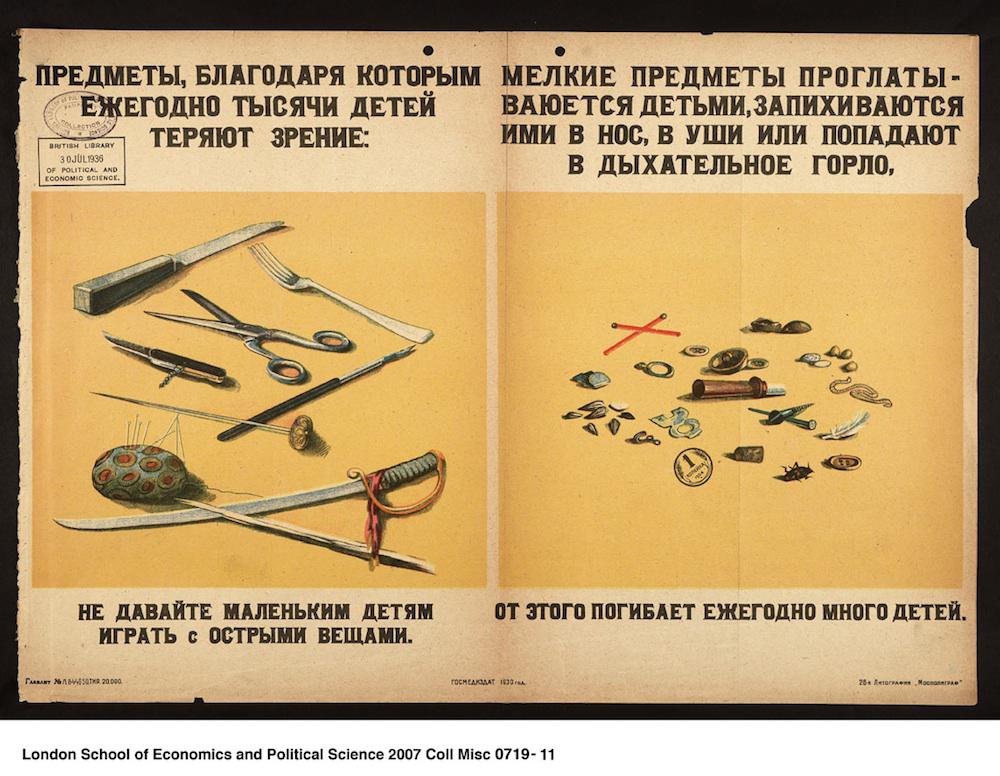
London School of Economics Library.
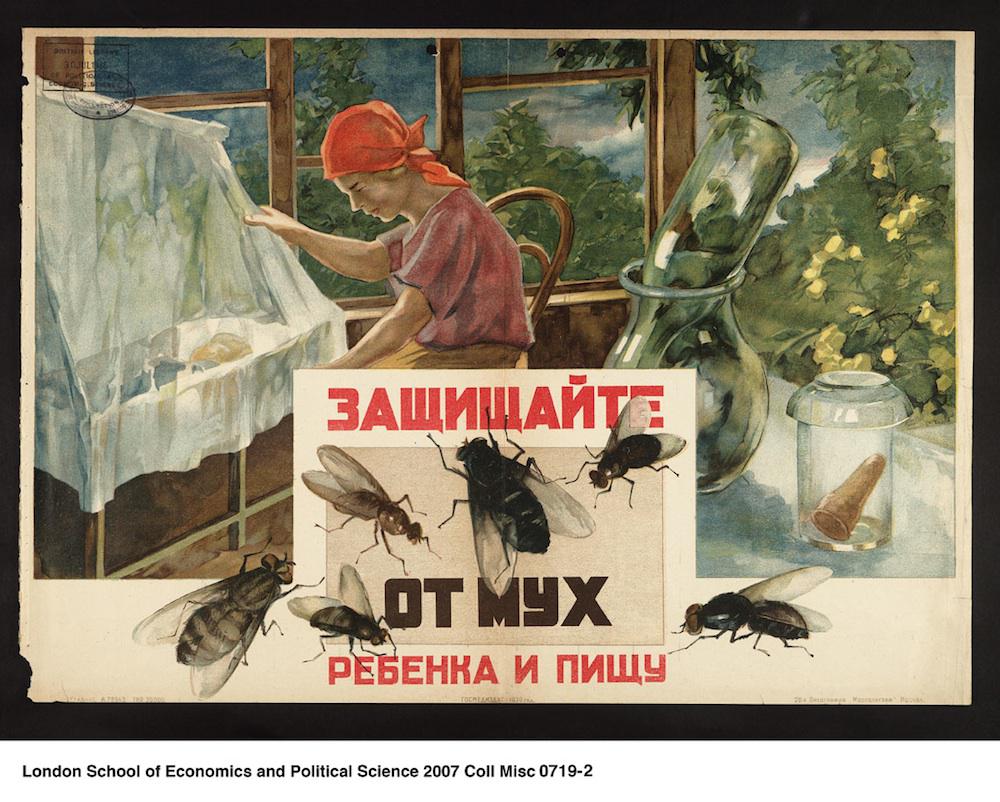
London School of Economics Library.